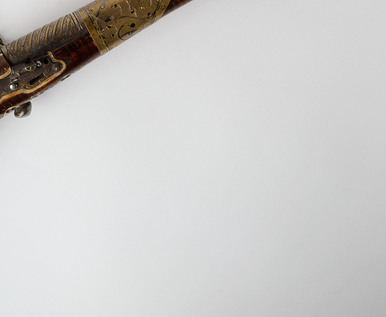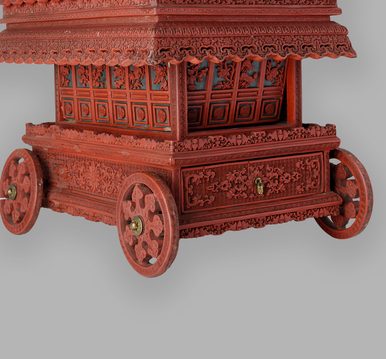In the 19th century, Kyakhta was one of the wealthiest cities in the Russian Empire. It was part of the Great Tea Road and was rightly recognized as Russia’s tea capital. For a long time, it was Kyakhta that supplied tea to the entire of Russia and almost had a monopoly on selling tea to Western Europe.
In 1850, Kyakhta was home to 58 trading firms. The wholesale tea trade was dominated by some of the town’s wealthiest merchants who later became famous for their huge fortunes and business connections. Among them were the Nemchinovs, Sabashnikovs, Lushnikovs, Igumnovs, Shvetsovs, and Sinitsyns. They left a mark on the town’s history with their charitable activities.
The 19th-century tea tasting set from the museum’s collection symbolizes the long process of tea manufacturing and transportation along the Great Tea Road from China through Kyakhta to Russia and Europe. As a rule, every deal involved using a tasting set.
Tea tasting and trading would start at 5 a.m. and last until the evening. To determine the quality of a particular tea, it was brewed in a tiny teapot. A taster would at first take a moment to inhale the aroma and then slurp the drink into their mouth. The tea trade turnover was enormous. Over 25 years, between 1826 and 1850, 167 million rubles worth of tea was imported through Kyakhta.
Trading contributed greatly to Kyakhta’s prosperity: the town saw the construction of churches and schools, the appearance of Transbaikalia’s first newspaper “The Kyakhta Paper”, and the establishment of a public library. Literary nights, balls, and theater plays were organized in Kyakhta.
The houses of Kyakhta merchants were imbued with a sense of European aristocratic life. The interiors were decorated with artworks from all over the world, including Chinese porcelain of the highest quality, furniture made of rare wood, Japanese vases, as well as statues and paintings by famous European and Russian artists.
Kyakhta prospered up to
the second half of the 19th century. The memory of those wonderful
decades has been preserved in the unique exhibits that make up the museum’s collections
of painting, drawing, and decorative and applied arts, as well as the collection
dedicated to the Great Tea Road.



